|
Today, Camilla was shoved by an old lady, I was chatted at by one, and we both barely escaped from a gaggle of curious ones.
We had planned to go to the Mingeikan Crafts Museum, which involved taking a subway from Minowa to Ueno Park, then another one from Ueno to Shibuya, and, finally, a train from Shibuya to Komaba-Todaimae. In the course of this, I made use of my brand new kanji expertise. Certain pictograms appear over and over, like the word for town or bridge. One word at a time, I'm becoming literate. Makes me appreciate how hard it is for schoolchildren! The other thing that happened was that people on the train wore clothing. This may seem trivial, but Camilla does not take clothing lightly. She is on full alert in groups of people, staring at their shoes, the cut of their jackets, and so on. In this case, there was an interesting ensemble and while I got off the train, she did not. At that moment, we realized that we do not have cell phones or a backup plan. Luckily, order and calm prevailed, and Camilla simply took a return train back to the correct station. That was not the end of such events, though. Now, we had instructions, but they were misleading. "Walk out of the station and under the tracks and turn left." Well, there are two ways out of the station, and if you go the way we went, you are on the other side of the tracks so if you go under the tracks, you are now on the wrong side. It was a good thing, though, because we got to talk to a lot of people about our issues. The neighborhood was pleasant, with narrow streets, sweet old houses, bookstores, cats, geraniums, and stern signs in red with exclamation points. We bought sesame bread and something weird in a bakery, and that old lady was happy to explain, at length, about how to get to the crafts museum. With the map she drew, we retraced our steps and finally found the place. In the pleasant parking lot, we sat under a tree and ate lunch, listening to birdsong that reminded us of the zoo. Ahh. Now for the museum. Closed. All right then. Maybe they were taking a lunch break. We wandered around, and found a narrow path between houses that led to a park, which I think might belong to the University of Tokyo. It was small, but swarming with birds and old ladies. We sat, cheerful but suddenly exhausted. Much later, we retraced the last leg of the journey back to Shibuya, and got out to experience the intense, crowded street life. Very loud pop music, advertisements, and street barkers competed for decibel dominance. People swarmed everywhere, and so did we. Department stores in Japan house many small businesses instead of being owned by one overarching business. We poked around in one, finding things like diamond studded telephones in the shape of skulls, and belly button studs. There were topless sushi restaurants, a small shrine guarded by stone foxes, and people with turquoise hair. We had a snack at an Italian cafe and sat near a couple of burly French guys with oiled hair. From their very loud French conversation, we thought they might be pimps with a stable of very young teenagers. However, there is a lot of teenaged prostitution in Japan, called "enjo kosai" or "compensated dating." It's not necessarily coercive, or so it seems. Time to go to Ginza, a more frumpy part of town. We got out of the subway station at the iconic Ginza Clock Tower, which was festooned with Christmas lights. In fact, the entire street was being blasted with Christmas music. Unlike Shibuya, this cheer seemed a little forced. Not that many shoppers were out, and the stores didn't have the frenetic energy we saw at Shibuya. We went inside the Clock Tower Building, and, aside from the shop assistants and leather purses or single scarves exhibited in glass cases, all the floors were eerily empty. Outside again, we wandered the streets, finding really good French couture houses interspersed with smaller shops. Nobody seemed to be doing enough business to support themselves. Tuesday night? Or economic recession? We finished off our tourism business by sitting in Ueno Park at a fountain and getting picturesquely fountained on. Then, dinner from a 7-ll, half a movie (White Oleander, I don't recommend it though it was well done), a a jacuzzi, and bed. Kanji of the day: Town - 町, a rice paddy and the symbol for "block." We tidied up Yayoi's room, had bread and cheese, and trundled downstairs where the school was waiting to sing us a good-bye hymn. Why had Camilla sewn a big pink swatch onto the back of her pants? Oh. It was a rip. She nipped back up to the 3rd floor bathroom to change clothes, and I smiled warmly at people and did not explain why Camilla was making everyone wait. The song was beautiful.
Japan has an amazing overnight delivery service. We have used it twice now, once to send Tokiko's kimonos from Sendai to the school, and now to send two suitcases stuffed with 50 lbs apiece of books, kimonos, and pottery, to the airport. It was $20 per item. People use this service a lot because it's door to door and completely reliable. Or so I am told. The 1 hour bus ride to Tokyo was $15 apiece. We went to lunch with the editor of Bio-City Japan, a magazine dedicated to thinking about environmentalism from a spiritual as well as technological and political point of view. He picked an Italian restaurant (the second favorite choice here, after Japanese food), and watched happily as we ate. He said that Japan has an unbroken tradition of experiencing gods in the natural world, it is the nation of 8 million kami. With that attitude, it is natural for people to think of addressing environmental problems from a spiritual point of view. We said that the Native Americans had a similar point of view, but that for us, who are historically new to the Americas, our mythology is science. So, approaching the natural world through Citizen Science is a good way to get people engaged in effective environmental change. We bowed and exchanged assurances to connect our organizations with each other. Then we headed for our meeting with Allan West, but got sidetracked on the way by a pottery fair. Japanese pottery is about what you'd expect from having seen it at Uwajimaya and other such places, but here it is inexpensive. A bowl, for example, will cost about $6, and a large plate about $10. We wandered about, dazed and delighted. Finally, we broke free and wound through the alleys of that district to Allan's. I presented him with a watercolor and Camilla presented him with the copy of Andrew Henry's Meadow that she'd taken to Japan with her. What a fortuitous coincidence, that both of them should have been so inspired by the same childrens' book! We sat and discussed lots of things like the role of artists in inspiring change, and living in Japan as a foreigner. Allan does a brisk business; lots of people dropped in or peeked into the windows and he seems to have a large following here. However, the Japanese screen painters do not recognize him as a colleague. Is it racism or what? He doesn't know and has found a way around the issue by simply selling so much good art. We parted reluctantly. In that short time, he's become a friend. We closed the evening by going to the same restaurant we found last time, and eating enormous amounts of delicious food; eel, raw mackerel, squid intestines, pickled daikon, caramel pudding, and wobbly greyish purple stuff. Mmmm. I spent the morning reading 3rd grade science and social studies booklets into a digital recorder. Ask me anything about Thomas Edison or water vapor!
In the early afternoon, went to one of the two Shinto shrines to draw a stone dog. All the rocks scattered around the shrine have worn carvings on them. On the way there, we suddenly noticed that many of the rocks by the side of the road have markings on them as well, either writing or weathered sculpture. At 3:00, one of the teachers invited us to go to mass. There were about 50 students in their uniforms, and they sang translated hymns which I could hum along with. I had mixed feelings. On the one hand, it was heartwarming to think of virtually the same service being held all around the world. On the other hand, as a non-Catholic, I kept wondering exactly how this culture benefits by orienting towards sin and the suffering Christ on the cross. They're already so careful and polite that there is a huge cultural shadow of suicide and sexual weirdness. No need to add the righteous Christian ones of religious intolerance and black-and-white thinking. In the evening Yayoi and I fixed dinner on the hot plate in the little closet near our room. Three of the girls came by and said it smelled good. "Thank you," I said, and bowed. "What you make?" asked the boldest. "Our dinner is burdock root, mushrooms, and fish," I said, and showed them each item. "Mmm," they said, wistfully. There was a pause. "What was your dinner?" I asked. "Our dinner was Japanese meat balls," said another girl. "Did you like it?" There was a long pause, and they looked at their shoes. Finally, one of them said, "Yes, we liked it," and they all giggled. THAT is how the Japanese say "Not at all!" After dinner, we went to the girls' dormitory on the 6th floor to meet with the three girls who signed up to sew bags that look like fish. Twelve of them showed up. Hmmm. We hastily came up with more fabric, and eventually everyone was happily sewing away, maybe singing or chatting with friends, or generally acting like sewing women probably have for the past 20,000 years. Afterwards, Yayoi worked on her own fish bag while Camilla and I tried to stuff all our things into a suitcase and make it weigh less than 50 pounds, or 22 kilos. So much of our accumulated booty is either silk kimonos or art books, that there was some trouble packing so that the suitcases' contents didn't rattle. I taught a math lesson to all 80 kids this morning, on Fibonacci numbers. You add the first two numbers to get the third, and so on, like this: 1, 1, 2, 3, 5, 8, 13, 21, 34, 55, 89, and so on. A little difficult to get anyone to say their answer out loud, but hey. Next, I had them draw a spiral. Fibonacci spirals occur in shells, in ears, and pretty much everywhere. Finally, we started dividing each number by the one prior to it. Not so far out in the series, this is the Golden Proportion, which is found in the ratio of your forearm to your forearm and hand, of your middle finger to your pinkie, and so on. But it was time to stop so that was another lesson that I suspect may simply vanish into the "inexplicable but who cares" file for most of the kids. A few of them lit up, though.
Next, calligraphy lesson for 7th and 8th graders. Now that I'm an expert in the subject, the class went really well. I managed to explain the ideas and the kids were enthusiastic about calligraphing a good piece. After lunch, Session, a good one. Camilla and I started by teaching all 80 of the kids plus 10 teachers to sing "Oh How Lovely is the Evening." It's not only a round but a verrry slow dance. Picture 90 people who can hardly speak English, and who seldom do anything silly, and who are all wearing black uniforms. Okay? Now, picture me telling them to move the plants and the teachers' desks out of the way. I explain that they're going to hold hands and walk in a circle. Blank. Um, okay. I take the hand of one of the students, who is shocked, but gamely follows me to the back of the room and stays where he is put. Eventually, I got the idea across that ten of them should stand there and (horrors) hold hands. Okay. Now, to put 30 of them in a circle around this middle circle, that was not that hard, because the kids who were willing to volunteer for things volunteered. Finally, the remaining 50 kids had to be cajoled out of their seats and forced to take hands. Piece of cake. Now, picture me trying to get them to conquer their nervous giggles and sing a song that is new to them in a foreign language. Done. Next, I had them all go to right while singing, "Oh how lovely is the evening, is the evening," and then change directions while singing "When the bells are sweetly ringing, sweetly rining." Finally, at the "Ding dong" part they all stood in place and swung their arms in time. That's the setup. Now, with some shouting and arm waving, I got them to do it as a round. The inner circle started, then the next two circles in turn began, and lo! they sounded great and had a grand old time of it. It took actual yelling and grabbing people to get them to stop, after about 20 repeats. They could have danced all night. The rest of session was about family and community, but quickly drifted off into various sideways exploration such as how Americans shake hands instead of bow, and how the Holocaust made refugees from Europe come to America. One of the students helped Yayoi translate. Three hours of this, and everyone seemed pretty interested even as we encroached upon dinner hour. Camilla and I went on a lovely walk past the foggy dam, and crickets calling in the bamboo forests, and yam and rice paddies, and persimmon trees orange in the mist, and a generally Oriental experience. Last night, Yayoi and Matsuname-san did us the enormous favor of going grocery shopping with us and buying a one-burner cooker with skillet. Now we can make our own food, and we do! I made scrambled eggs with onions and mushrooms for breakfast and it was mahhhvelous. Made the mistake of visiting the cafeteria for lunch - overcooked rice with shredded slightly off fish and shredded sweetened egg, along with unflavored potato soup. We made dinner on the cooker - yams and onions with sesame seeds on rice, followed by persimmons and Camembert. Nice to have solved the stomach ache problem.
This morning I was greeted with, "Excuse me, but the plans have changed." Instead of teaching math, I went on a walk down the bamboo slope to the first persimmon tree and back. All the nice spider-infested weeds that covered the sidewalks when we first arrived have been weed-whacked, apparently by that one guy we see toiling away every morning on our walks. Camilla spent the day working on her college applications, so I did the crafts lesson for seven elementary school students alone. We started with an ESL lesson, where I gave people different colored yarns and asked them to pass them around. "Please give the yellow yarn to him," I'd say, and there'd be a long pause while everyone tried to figure out "yellow." Then, with a triumphant smile, the yellow yarn would go to its proper home. In the middle, two Japanese teachers showed up to watch, so I was relieved that the lesson went well. We learned "wrap around your hand" and "tie a knot," and then I showed them how to make Ojos de Dios, the Huichol Indian decorations. Next, the 9th and 10th graders were to learn calligraphy. I wasn't sure where to go or whether I would be introduced or what, so there was a bit of a pause. Then I was motioned to begin, and had one of those hours that teachers hate. I said "Good morning," and bowed. Everyone said, "Good morning," bowed, and went back to chatting. I talked a little about the italic alphabet, asked people about Italy and alphabets, and got no takers. Okay. I wrote the alphabet on the board and talked about Japanese calligraphy, about art, about .... well, it was clear that I should stop talking and have them start. I showed them that c, a, d, e, and q are related, and asked them to practice. Somehow, the idea of calligraphy as a separate skill had not gotten across to everyone. These kids already know how to write the Roman alphabet, since it is one of the many scripts that the Japanese use in daily writing. So, about ten of the 40 didn't bother, another 10 scribbled single letters, and only about half the students "got it" and actually tried for careful, beautiful letters. Things finally gelled when I showed them "The quick brown fox jumped over the lazy dogs," probably because it was something new. Finally, another teacher arrived and I suggested we divide the class into those who wanted to continue and those who were better off studying other English work. So, that's what we did, and that was good. After lunch, I had the little ones again. We made tassels for the Ojos de Dios, to much enthusiasm and Julie worship. A nice antidote. Then we were whisked off by a shy, dapper teacher, whose name and specialty I never learned. He lives on about 15 acres of farmland in a picturesque farmhouse about 5 miles away. His wife is taking classes in fabric arts in Tokyo, and she showed us her cotton charkha, or spinning wheel. You turn the handle with your right hand and spin thread-thin yarn with the other. We discussed sheep wool, mugwort dyes, and weaving for a while. In the meantime, the teacher was walking around with their 6 month old baby. She was remarkable. She'd been sleeping under a bulky duvet in the middle of the floor when we arrived, and simply opened her eyes and watched us. After tea, the teacher picked her up and walked her around, and she just watched. My own babies were far noisier and more active. Could you have a cultural difference at such a young age? We went outside to walk around. The farm is on a hill, and so every hundred feet or so there was a terrace and a new little patch of tilled ground. There was a daikon garden, a persimmon orchard, a rice paddy, another mixed persimmon and chestnut orchard, and then up at the top of the land, several unused rice paddies and a fern patch. He said his neighbors give him rice so, since he has a full-time job, he doesn't work those fields. A spring fed the top rice paddy, and there were little channels dug into the clay to feed the water through all the lower fields. The teacher said that there were mountain crabs in the runnel, but we squished through the mud a bit without finding any. The highlight of the day was the English lesson with the teachers and the top English students, about 20 people in all. The whole school has been studying Ancient Egypt and watched a BBC documentary series on how scientists figured out that the fall of the Old Kingdom was caused by a 200 year drought. Yayoi and I had already transcribed the documentary, and we were going to discuss it. First, everyone watched the series again. Next, I was asked to rephrase the first few paragraphs of the transcription. Now it got interesting. Instead of focusing on the topic at hand, people felt free to digress, sometimes wildly. I started by saying that I would read from the first column of the first page. Somebody asked what a column is as compared to a paragraph. We must have spent 20 minutes on newspaper columns, rows and columns, architectural columns, and the Japanese word karumu, which sounds like "column" to their ears, and means newspaper column. Somebody asked Camilla if her hair was real, and I pulled it to show that it was firmly attached. We talked about swearing and the difference between God, god, and gosh. We talked about omens and ominous. We talked about toppling governments, bringing them to their knees, and political upheavals. It was just like a dinner table conversation. Back at school. The first thing we heard this morning was, "Prease excuse me, but the plans have changed." Instead of what we'd worked out the previous week, now we are to give a lesson to the 11th and 12th graders, with the help of two good students, on how to write about the parent conferences in English. Please remember that we were not at the parent conferences. This was a cheery lesson on the part of us four teachers, but our students appeared to be petrified. They all claimed they liked it, though. We made ourselves available afterwards to help anyone who wanted their English checked, but nobody did. Camilla spent much of the afternoon asleep, possibly a mild illness, possibly exhaustion from our breakneck pace. In the mean time, I corrected a transcript of a BBC series on why the first Egyptian kingdom fell (climate change/drought). It made me understand once again how difficult English is. The word "the" is such a problem for someone who speaks a language where it is not used. Do you say "the Egypt?" No, but why not? This took THREE HOURS. Then Yayoi and Matsuname-san took us off to get groceries. The cafeteria food here is pretty much inedible. I was willing to eat it anyway, but really, I don't do well with stomach aches. Camilla is fah moah refahned than I am and simply goes without food rather than eat sludge. Today I had lunch at the cafeteria while she slept. Overcooked noodles in brine, overcooked white rice, and soggy breaded fried fish. That was it. Anyway, we went out for Italian food, then bought an electric burner, a skillet, some eggs and cheese and mushrooms and a bag of rice, yams, onions, and cabbage. I feel better already. We finished up the evening by learning our schedule for tomorrow. I do a math lesson, followed by, surprise, a crafts lesson, then a calligraphy lesson, then teach a round to the entire group, then teach the Egypt transcript to the teachers in the evening. I'm curious to see if that's what actually happens. It's certainly a hefty schedule! We checked out of Andon Ryokan this morning, regretfully. It was a nice guesthouse, with a youth-hostel feel to the common room, but privacy and cleanliness in our room.
We took the subway to meet Yayoi at 9:45, but there were four exits, not visible from each other. Hmm. I tried a nearby telephone, using my handy ability to recognize the kanji for yen (円) and the knowledge that even if it went badly, horribly wrong, not much was at stake. Well, it did go wrong, but not badly. I had a string of numbers, but didn't know that the first two were only for use outside of Japan. I should have entered a 0 instead of an 81. Just as I finished my third permutation of when to insert coins, when to dial, and when to panic, Camilla showed up with Yayoi, and we set off down the road together, with our luggage rolling heavily behind us. Where were we going? To the Tsukiji fish market. It was a noisy street and walking three abreast wasn't possible, so I simply accepted this explanation instead of quizzing Yayoi on why we were doing this at 10 in the morning instead of 4 when it opens, or even why we were doing it at all. We strode along with the insouciant confidence of tourists, and then met a crowd of people who were going with us. Why? I do not know. One of them, I learned much later in the day, was a manga illustrator for Clamp. I would have been very excited except that I didn't find out which one, and it seems a bit extreme to be thrilled about meeting somebody you can't exactly remember. Anyway, we all trotted along to the fish market. But first, an early lunch. One of our group distributed the rest of us, three or four at a time, amongst the teeny sashimi booths outside of the actual market. We sat in a phone-booth sized restaurant and had amazing sashimi, the texture of ripe Brie, the flavor of persimmon. Also tea, rice, and miso soup, of course. Then we regrouped and went across a road to the fish market. There it was, the largest fish market in the world, closing up for the day. We edged between careening handcarts, scooters, and forklifts, and watched men at countless booths wash down their area. Some of the slower ones still displayed an astonishing array of crabs, shrimp, shellfish, and fish. We didn't see the whale section. The enormous slab of red meat Camilla thought was whale was tuna. Finally, it was clear that we were seriously in the way of people who just wanted to go home and were actually willing to skirt along the edge of being rude about it. We scurried away and waited for the others in a parking lot. They eventually appeared, with handbags and brief cases full of reject fish, sold to individual customers at a discount after the chefs are done with their shopping earlier in the day. Everyone looked smug. On the way to the next destination we stopped at a Buddhist Temple. In the States, on the West Coast at least, most people think of Buddhism as an exacting, extremely holy sort of religion, mysterious and blessed by Alan Watts and Gary Snyder. Well, here, it is just another damn religion. The temple was huge, new, and ever so slightly cheesy. There was a small crowd of drop-in worshippers, and room for about 200 in the main room. It seemed a bit like a Protestant church as far as furnishings and emotional feel, except that it was being used even though it was an off-day. After that we walked through narrow alleys to a block that was the only one in that part of Tokyo that hadn't burned in World War II. There was the stamp studio. Stamp? Japan is a stamp culture rather than a signature culture. If you want to do something major at a bank or other scary institution, you use a stamp to make it formal. This guy carves them from stone. We sat down to tea and friendly conversation about the Chinese origin of kanji. Eventually he said that we should go shopping because the workshop would start in an hour. Workshop? All eight of us went out and walked briskly about, stopping to smell the kim chee in Koreatown and look at wedding dresses like bells. We ended up in the same open air market near Ueno Park that we visited before. Camilla and I got roast chestnuts and everyone else did mysterious things. Back at the hanko studio, we were given a choice of stones, each with a square face on the ends of a 2 or 3 inch long prism. We could choose a design from some sheets of paper he passed out, or make our own. A few nights ago, Tomomi's friend had given us our names in kanji, and Yayoi discussed them further with us last night. Mine can be tree/hometown/wild boar, and Camilla's goddess/tall orchid. I decided to do a design of the kanji for hometown (里) inside a tree, and Camilla designed a kitsune, or magical fox. To make the stamps, you either glue your paper onto the end of your stone, or draw the design with pen. Then, you use a sharp chisel to gouge out a hole, and crush the stone around the hole in successive waves until you've crushed everything you don't want, leaving the design. This was finicky and slow work, and so while our workshop leader paced around or cooked dinner, the rest of us crushed rock. Everyone was pretty pleased with their end product. To stamp, you use special ink paste made from cinnabar, glooped into a ceramic bowl. Dinner! There were 14 people in all, and the meal was a feast. We started with pickles and quickly moved through many dishes including crab and cabbage soup, sashimi from the fish market excursion, and Italian-ish pasta. At the far end of the table, the guests were chugging through bottles of wine, and then sake, as though the word "hangover" has no meaning. One of the guests got more and more informative about Japanese customs, until we were much wiser and his friends were trying to get him to shut up. Finally it was 8:30 and we had to run to catch the bus back to school. Subway to Tokyo Central, bus to the school, school van up the hill, shower, and bed. This morning we saw 1/3 of the Dürer exhibit at the Museum of Western Art. Along with Hokkusai, he was my favorite artist when I was a young adult. The part we saw were his etchings of the 12 stations of the cross, which are kind of a turn-off for a non-Christian. His detailed depictions of Jesus' suffering were a tad too voyeuristic, but that was the spirit of the times so I forgive him. We didn't have time to see his portraits and natural history etchings, which was too bad. I particularly love his "Knight, Death, and the Devil," which hung temptingly on the wall as we rushed past to get to our appointment with Yayoi.
We met her at the fountain near the museum. Where would we go? To the bookstores, of course! There is an entire section of Tokyo near the University devoted to them. We took the train and then the subway to get nearby, and then walked through a pleasant afternoon. The bookstores were full of books. Problem is, books mostly appear as spines until you pull them out of the shelves. Reading Japanese is not one of the things I do. So, we poked around, pulling likely looking things off the shelves, and zeroing in on bookstores that had ukiyo-e. Prices ranged from 1000 to 80000 yen, about what you'd find in the States. Reports of shockingly high prices here are not always true. Some things are very expensive, such as fruit, but most things are only about 20% higher than we expect. For example, our Chinese restaurant lunch was 1000 yen apiece, about $12, no tip expected. Not cheap, but not crazy expensive either. Around dusk, we wandered through Ueno Park to visit Allan West, an American ex-pat from Utah who came here as a Mormon missionary and stayed as an artist. He learned traditional screen painting from a Japanese master, and uses mineral pigments with deer bone glue and big floppy brushes. His screens are even better than they look on his website. The colors are deep and mineral looking, as though the land itself is participating in the art. He keeps to traditional themes of trees and leaves, but adds motion to make his screens seem to pulse. We talked for a long time, and then he suddenly realized that we lived on the same island where the author of "Andrew Henry's Meadow" lived. Wow. That book inspired him to become an artist. To find out that there really was such a meadow, and that Camilla and I have personally viewed it with our own personal eyes made him light up. We all ended up grinning at each other. After our visit, it was late. We went to a drinking restaurant, one that serves all kinds of traditional snacks to go with the alcohol. Yayoi had a clear drink from fermented miso soup. My sip was quite interesting, a fruity, salty, freshwater kind of a taste. The snacks were really well done. Tuna, bream, and salmon sashimi; kebabs with liver, kidneys, bacon, and weird things; skewers of tomatoes and quail eggs; salad with a very soft boiled egg quivering on top; leek aspic; mushrooms in butter; caramel pudding. We took the subway home and actually got there without incident. Words of the day: The kanji for Camilla mean: kami - god, divine, up, or paper, and la - orchid. The kanji for Julie mean: juli - large tree, i - wild boar. One cultural difference that surprised me is the speed that things happen at. I seem to need more time to absorb things than is allowed for around here.
A kindly host will see that I'm drooping and say, "Do you want to rest for ten minutes?" No, actually. I want to rest for an hour. Or an afternoon. I hardly know how to begin resting in ten minutes. Japan is the only place I've visited where people eat more quickly than I do. The food arrives. I cradle my teacup in my hands, and as I take the first sip, glance up and see that everyone has inhaled their meal and are politely waiting for me to begin. Speaking of eating, meals are served with individual plates for each different flavor. So, you can end up with a stack of seven or eight plates by the end of the meal, more if you have gone to a high-end restaurant. But the chopsticks are almost always single-use disposable. Imagine a nation of 127 million people using three pairs of chopsticks per day and tossing them! I asked why people don't have lovely designer chopsticks, just like their lovely plates. The answer? It would be too much work to wash them for each meal. Electronic multitasking is taken for granted. Cars have TV's and GPS on the same screen, and it is not uncommon to be driven by someone who is switching back and forth between TV and GPS, texting on their cellphone, and trying to chat in a foreign language. Answering a cellphone during conversations is common and one of the few things that doesn't merit an apology. At the school, after a short conversation about what would be a good lesson for the day, we're asked to summarize the options in a sentence apiece, with time needed. I seldom know the answer, since I don't know what the parameters are. There is a pattern to when things need to be exact and when they can be sloppy, but I don't know what it is yet. When I return to school this coming week, I've been asked to do a few crafts workshops. About an hour apiece. For origami, maybe I could do that. But for card weaving? Drawing? A sewing project? Hard to imagine. Sightseeing is accomplished at breakneck speed. I like to poke around, stop to sketch, wait for a serendipitous event. In a group, with a tight schedule, that's simply not an option. We arrive, sweep the area, and we're outta there. I find that it is indeed possible to gather the essential feel of a place that way. English lessons are a strange combination of intense and superficial. Instructions are in Japanese, even though that's a clear-cut place where English could be taught and used. Individual grammar or vocabulary points are mentioned and then we're done. I think that students are expected to take notes and memorize the material later, but the fact that even after years of instruction few people are that fluent indicates to me that more classroom time in English would be a good idea. One good thing about all this is that in order for things to work this way, they have to work. I haven't noticed anything that's broken. Problems are addressed at once. If I mention that I'd like more fresh food, we veer off to the grocery store and get some. We asked about adapter plugs and bam, we went to three electronics stores until we found one, and only then went back to the day's sightseeing plan. It is common to slide in to the train station with exactly enough time to buy the ticket and trot through the various checkpoints. The train will arrive the moment the schedule says it will, and leave half a minute later. Word of the day: soro-soro: Let's get this show moving, folks! |
|




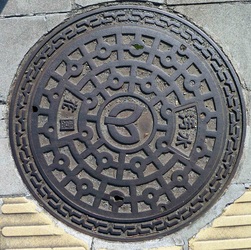


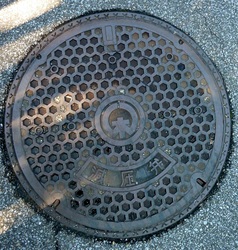







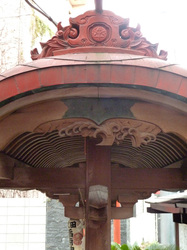









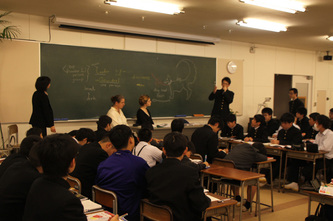
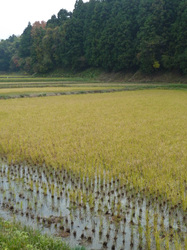








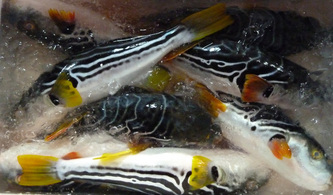
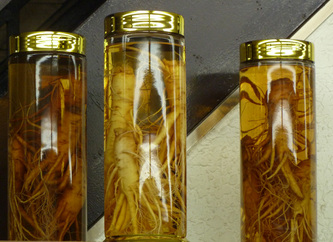



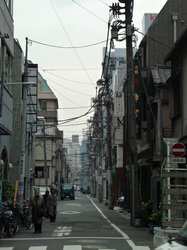









 RSS Feed
RSS Feed
